Ron Henderson discusses how fire service appliances haven’t always been finished in red paint, with a special look at silver fire engines.
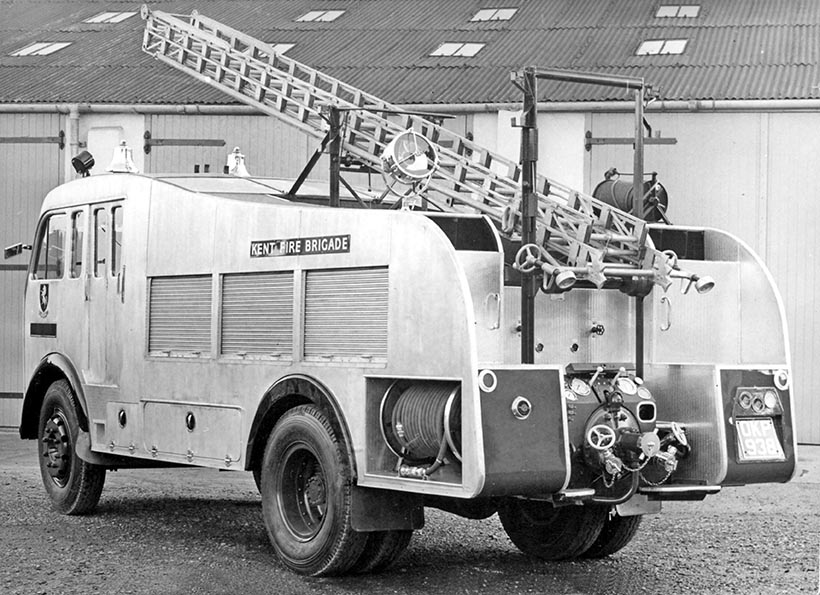
Red had generally been the traditional vehicle colour for generations in the fire service. It was an easily recognisable colour, which was said to promote a sense of urgency and alarm, and also act as a warning. But there were exceptions, such as the dark burgundy fire engines found in Newcastle and Leicestershire, and the olive-green ones assigned to the Auxiliary Fire Service.
The notion of yellow or white fire engines was a long way off back in the early 1950s, when a new colour for fire engines was to appear – silver – with Kent Fire Brigade being the instigator. In the early post-war era, this brigade had standardised on Rootes Group vehicles for its fire engines, commissioning large batches of Commers and a few Karrier Gamecocks, for conversion to standard water tenders.
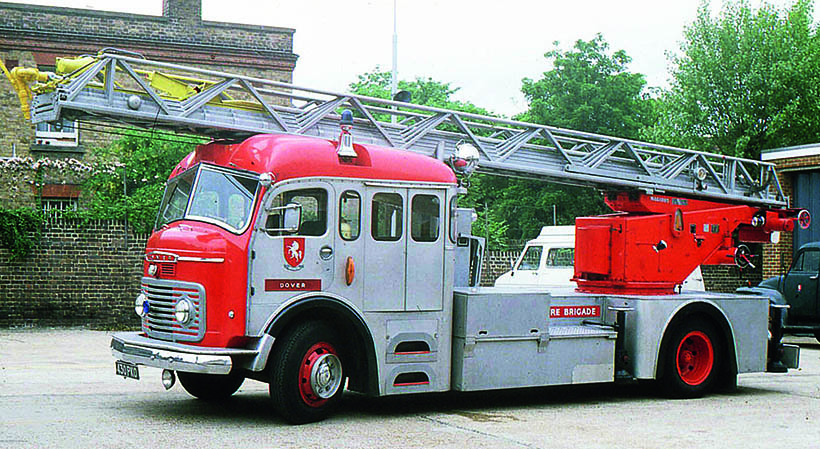
Kent Fire Brigade’s chief fire officer, Lieutenant-Commander JH Fordham, and the county’s fire brigade committee, mindful of financial constraints, felt that a more utility or functional type of finish was required for its vehicles. This prompted discussions with Hampshire Car Bodies Ltd, of Southampton, which was already supplying vehicles to the brigade, to enquire about the possibilities of using plain or embossed aluminium or plastics for the bodywork of the county’s fire engine fleet.
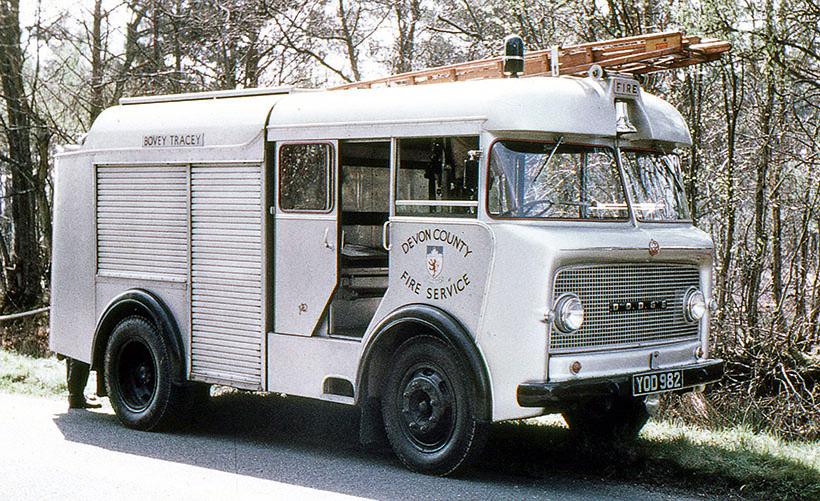
In 1950, the Rootes Maidstone showroom displayed a new Commer fire engine, registered PKT 730, with the side panels finished in embossed aluminium, together with a second water tender with the sides unpainted with a matt aluminium finish. Addressing an audience of representatives of the Home Office and neighbouring chief fire officers, Lt-Commander Fordham explained that, while in the past it had been a tradition for all fire-appliances to be finished in red paint, the tradition – as worthy as it may have been – could be a bar to progress.
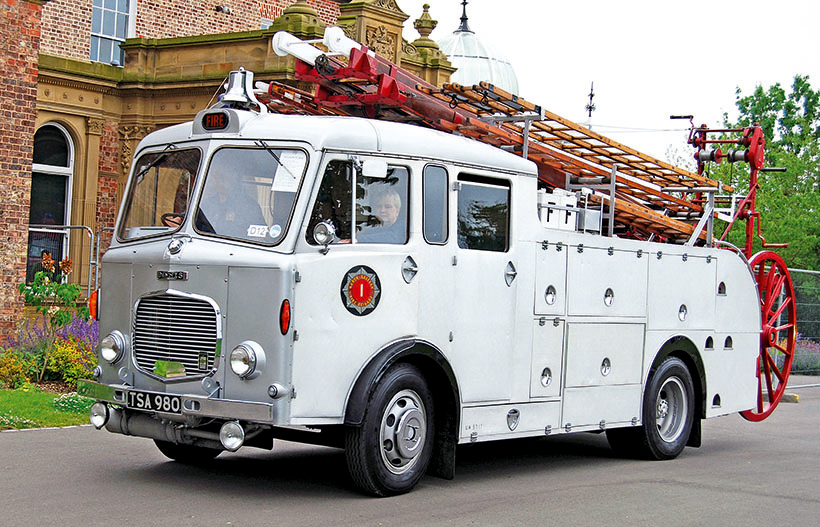
He went on to explain that red was a popular colour with a number of transport undertakings, rendering the original red as a colour for fire engines being lost. This was a popular notion at the time, with some fire brigade authorities campaigning for the colour to be retained exclusively for fire engines! One can’t help thinking that London Transport wouldn’t have been too happy about that!
Another theory suggested by Lt-Commander Fordham related to the high-gloss finish of fire appliances not being in keeping with the operational uses of the modern appliances, which easily had the paintwork damaged when passing through narrow lanes and wooded areas. Embossed aluminium could be easily cleaned in the same way as conventional bodywork with mud, dust and dirt fully washed off with water followed by a wax polishing, with the result that the embossed surface would not show up markings as much as a painted surface.
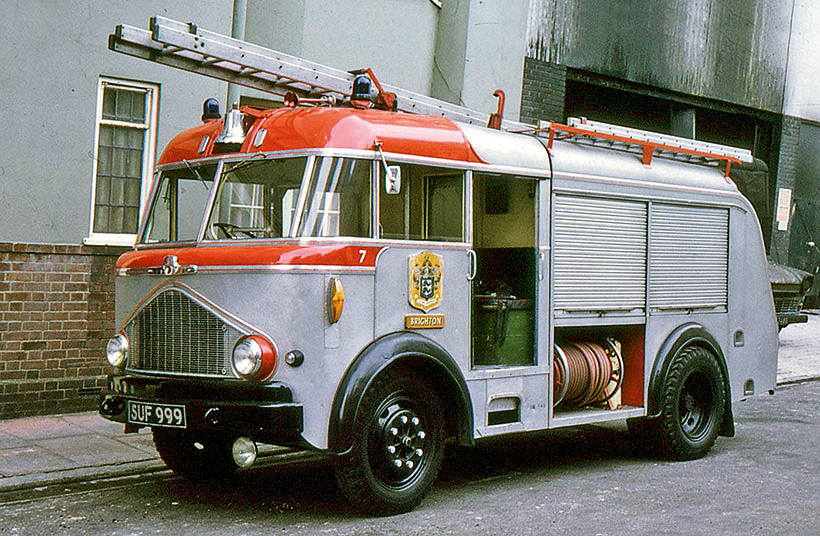
Thus, the first silver fire engine was born. It was felt that the cost of initial painting would be saved, plus the expenditure on periodic repair and frequent touching-up would also be avoided, resulting in a saving of about £1,800 on the cost of a new appliance over the following three years.
The notion of silver fire engines was a huge departure from tradition, but not totally. The warning colour of red paint, that was considered to be increasingly ineffective due to it being used by other road users, was still applied to the front and roof, making the vehicle readily identifiable as a fire engine!
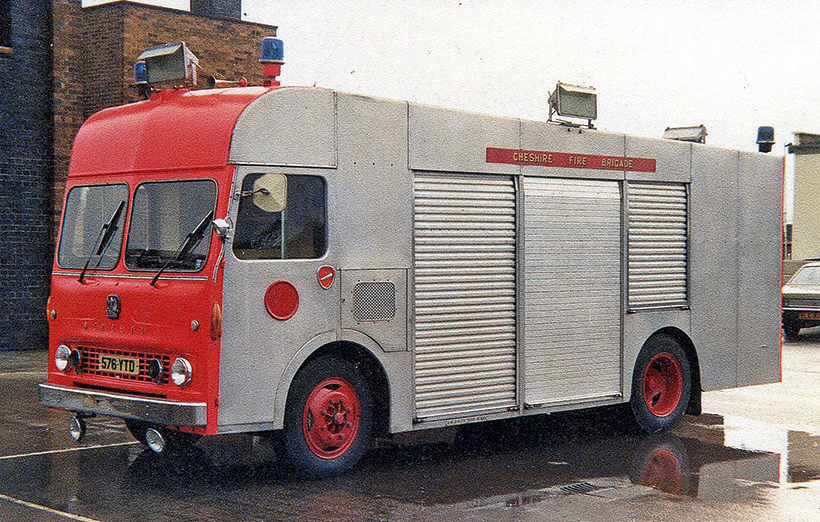
Lt-Commander Fordham certainly started something as, before long, most of Hampshire Car Bodies fire appliances were finished with unpainted aluminium bodywork and, soon afterwards, the other body builders started offering the option of silver or painted bodies. Within a short time, the notion had spread throughout the country, with many fire brigades replacing their entire fleets with silver fire engines, while some brigades even went to the expense of scrapping serviceable bodies and rebuilding them with unpainted aluminium panels.
However, there were the traditionalists, such as Durham County Fire Brigade and Fife Fire Brigade, that simply wouldn’t entertain such things, and ensured that their fire engines remained red.
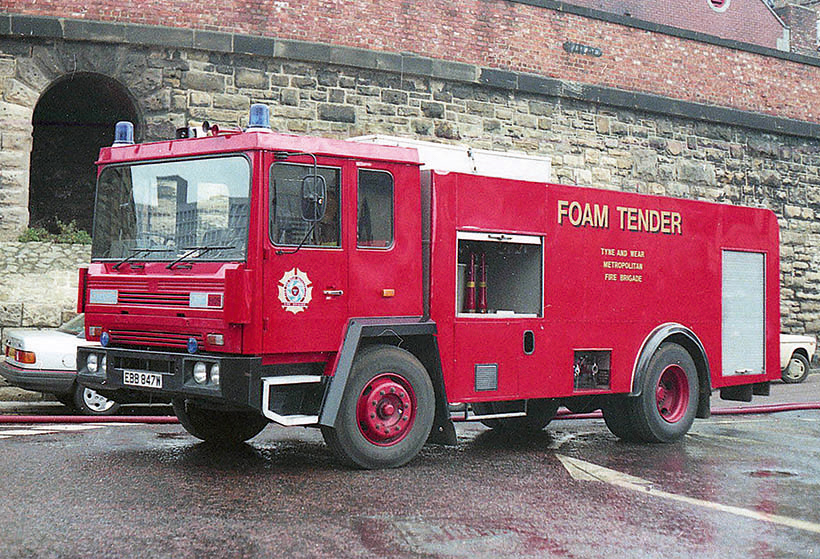
For a money-saving subscription to Vintage Roadscene magazine, simply click here

